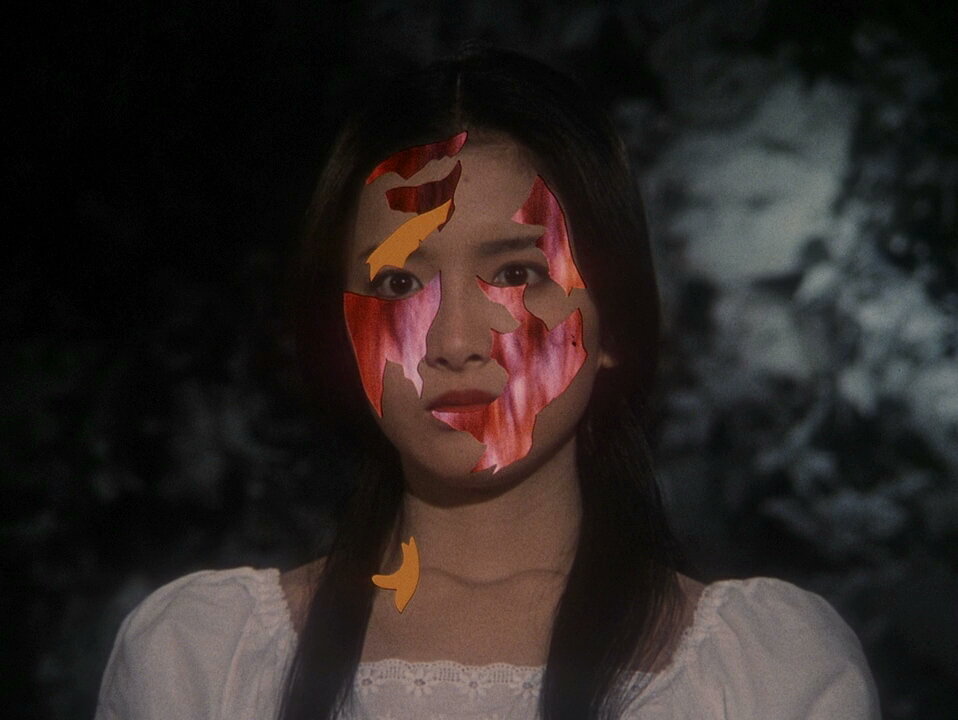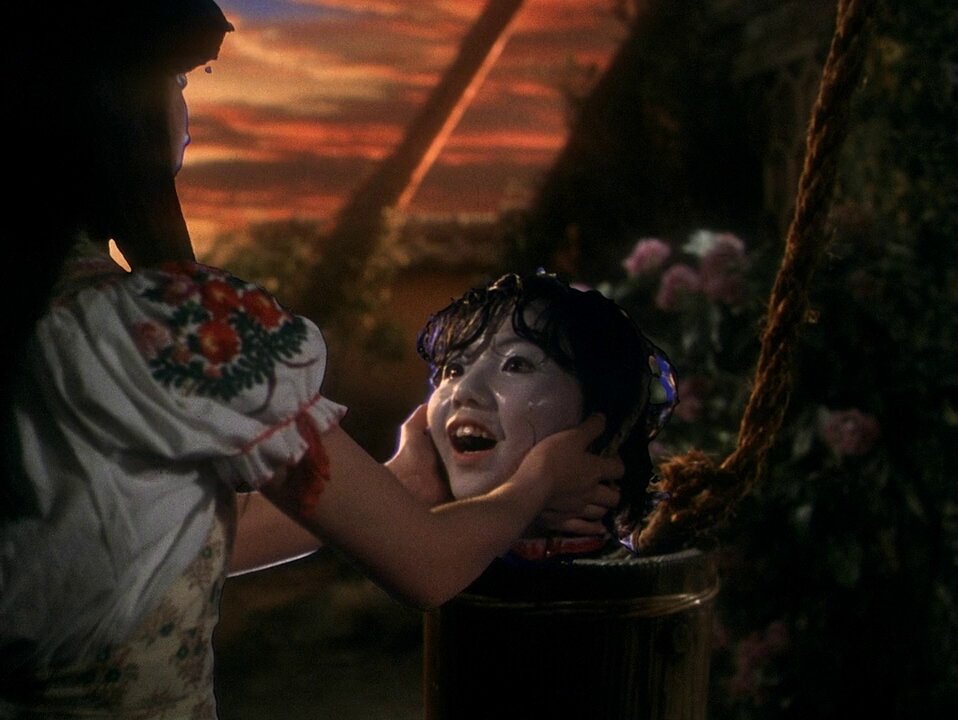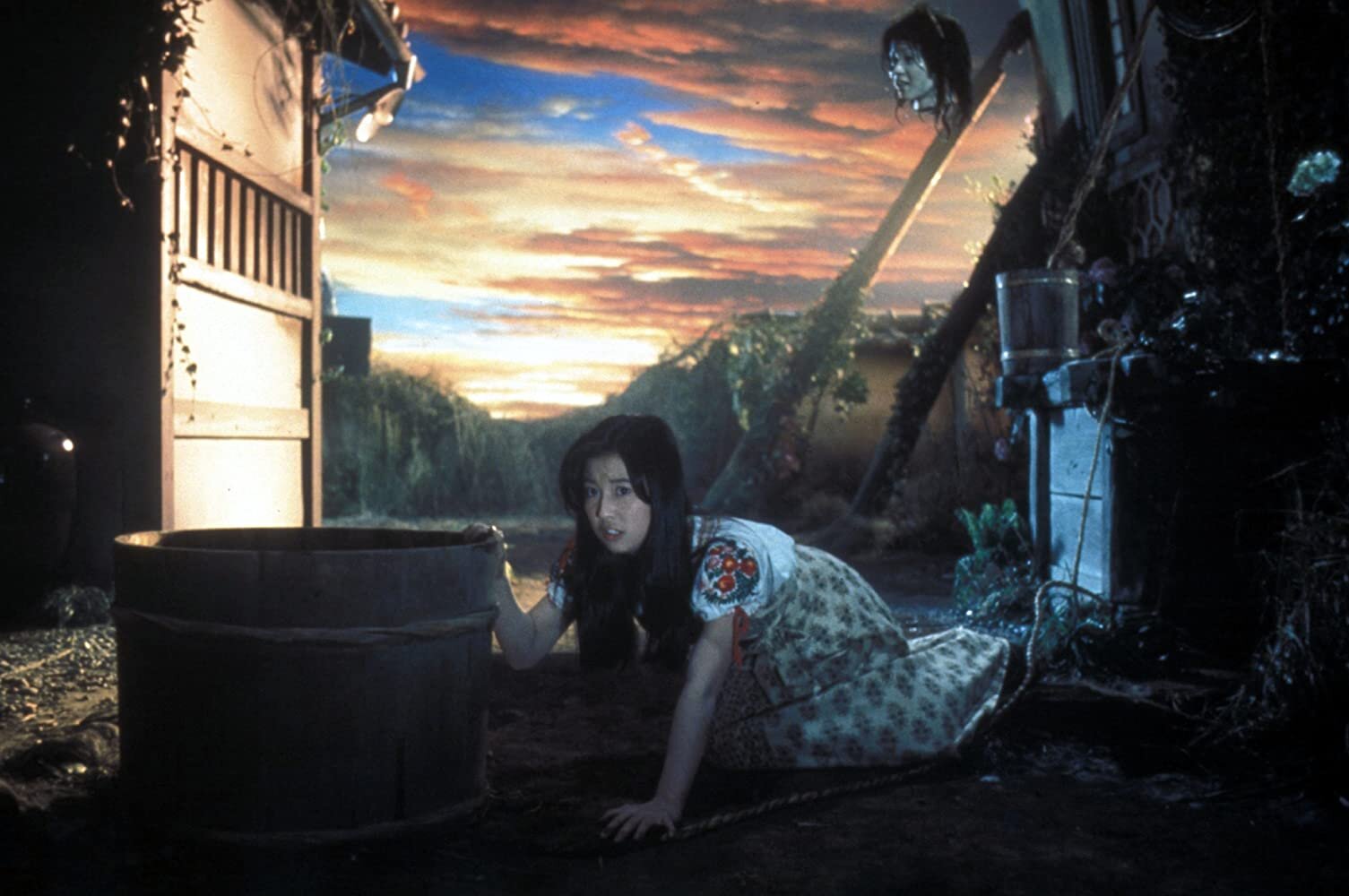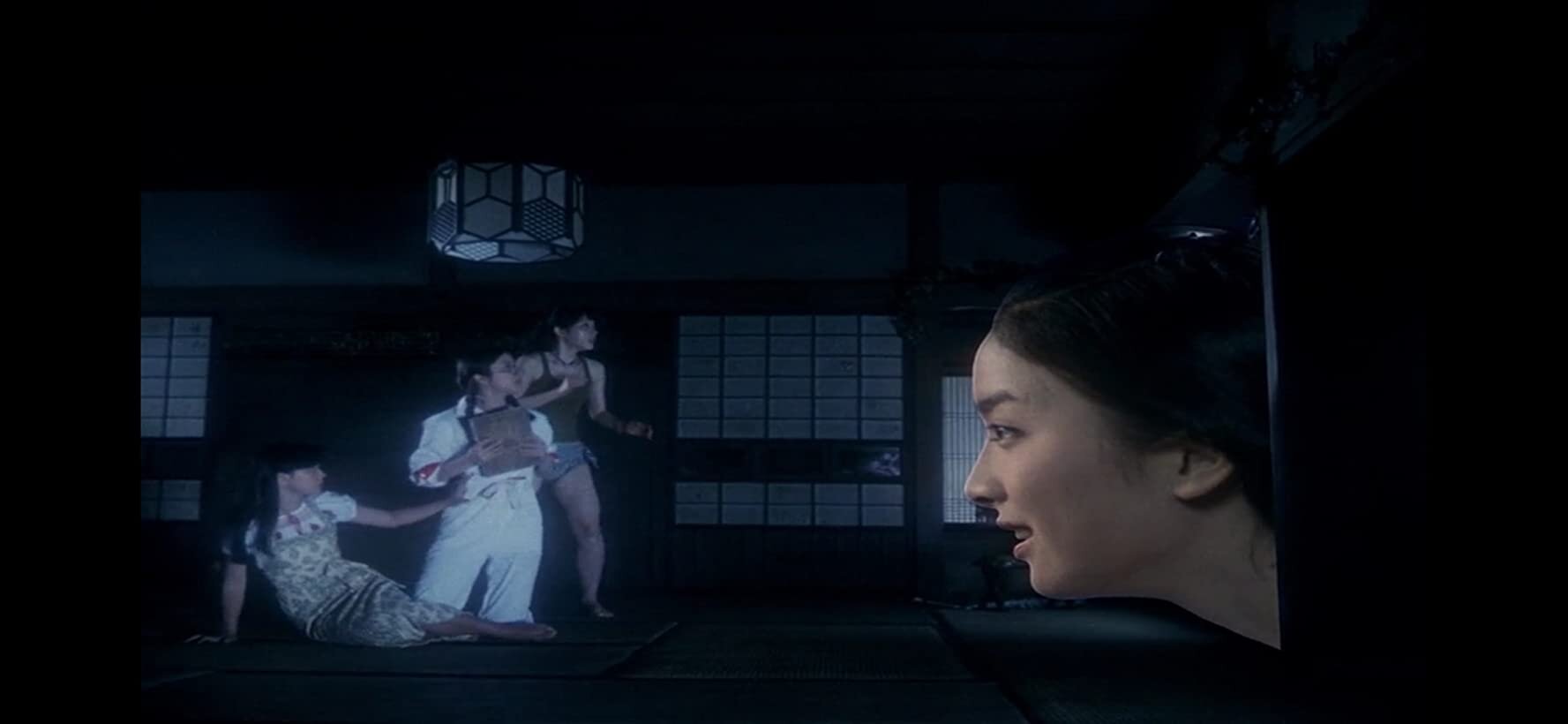Hausu: A Quarantine Fever Dream
The social conditions we have to adhere to during this pandemic are tricky. It’s a bit of a regression, a lapse into what it feels like being a teenager or a child again stuck in your childhood home. After spending months on campus in a tiny, cramped dorm, or in an apartment with your friends paying rent like a real adult, making your way back home (and so suddenly, at that) feels a bit like reliving your adolescence.
I was never one to go outside that often. I found peace and solace in lazing around my house, watching the world go by with a window cracked open. Now, I’m sure I’m not the only one who feels a bit trapped, like your home is slowly swallowing you whole.
It wasn’t until I re-watched the girls in Nobuhiko Ôbayashi’s Japanese horror-comedy Hausu (1977) in honor of his recent passing, that I realized all my fears and quarantine fever-dreams were already put on film.
The vision was born when Toho Studios approached director Nobuhiko Ôbayashi to craft a film akin to Jaws—taking inspiration from the ideas, dreams, and fears of his pre-teen daughter, Ôbayashi composed the frenzy that is Hausu. Instead of a man-eating great white shark, Ôbayashi gave us a teen-girl-eating-house.
The film follows young teen girl Gorgeous–named for her exceptional beauty–and her six friends Prof, Melody, Fantasy, Kung Fu, Mac, and Sweet. Gorgeous, once excited for summer vacation plans with her father, soon finds them to be ruined when she’s told that her new stepmother would be tagging along with them.
She decides to write a letter to her late mother’s sister, Auntie, asking to come visit her in the countryside instead. Auntie readily responds, and Gorgeous extends the invitation to her six friends as well.
Not long after the girls arrive at Auntie’s manor, they begin to go missing one-by-one, and an initially idyllic vacation soon goes awry.
It’s not an exaggeration to claim that the eccentric comedy-horror feels nothing short of an acid trip. The syrupy-sweet sunset visuals and cartoonish, bubblegum gore is nearly hallucinogenic. The garish saturation, vibrant color palette, and surreal editing are eerily comical. Piano keys chop off playing fingers; mattresses, pillows, and sheets swallow them whole; and mirrors engulf them as they apply makeup at their vanities. It’s an amalgamation of the dream-like fears of young girls—and it absolutely makes sense that Ôbayashi recruited his daughter for inspiration. It’s much too specific.
Cinema has a tendency to keep girls inside—from Disney classics like Tangled (2010) and Frozen (2013), to renowned films such as Room (2015), Portrait of a Lady on Fire (2019), and The Virgin Suicides (1999). Though Hausu can be read as a commentary about young girls’ fears of the transition from girlhood to womanhood, much of it has to do with, not what the girl fears, but what society fears about the girl. Make of that what you will.
I’m sure many of us, like the seven girls, would love nothing but to flee to the warm countryside, away from everything and everyone. As I watched them giggle and walk hand-in-hand through the forest to reach Auntie’s manor, I felt a yearning to do the same with my own friends. As I watched the doors swing shut to trap them inside, I wondered how they were going to escape. As I watched the house slowly eat them alive, I mused about whether or not I saw this in my own dreams.
Featured image via














